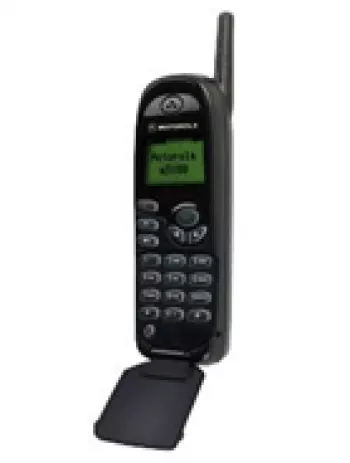
Overview of Motorola Aura
The Motorola Aura was a luxury mobile phone that first captured attention in 2008, offering unique design elements and a focus on aesthetic appeal rather than groundbreaking technology. At a time when smartphones were beginning to gain traction, the Aura stood out because of its premium design and exclusivity. This phone attracted attention for its intricate engineering and exceptional craftsmanship.
Design and Build
The design of the Motorola Aura was one of its most striking features. It was crafted with the utmost attention to detail, featuring a distinctive circular display. The device measured 96.9 x 47.6 x 18.6 mm and weighed 141 grams, providing a substantial, yet luxurious feel in the hand. The materials used in the construction were top-notch, including stainless steel housing, which added to its premium look and durability.
What made the Aura particularly special was its rotating mechanism, reminiscent of high-end watch engineering. The rotating cover was crafted from a single piece of stainless steel, which underwent multiple processes to achieve the perfect finish, including being manually polished. This rotating mechanism enabled users to reveal the keypad smoothly, an experience that was supposed to symbolize luxury and precision engineering.
Display
The Motorola Aura had a unique display concept that was almost unheard of at the time. It featured a circular TFT screen that measured 1.55 inches with a resolution of 480 pixels in diameter. With a pixel density of approximately 309 ppi, the display was exceptionally sharp and vivid, rendering images with surprising clarity for its era.
The display supported 16 million colors, which made the UI elements and images appear rich and vibrant. This circular screen was a key element of the Aura's distinctiveness and helped set it apart from the rectangular displays that dominated the market.
Camera and Photography
The Motorola Aura was equipped with a 2 MP main camera. While it didn't compete with the more advanced cameras available in some smartphones at the time, it was sufficient for basic photography needs. The camera could also capture video, although the quality was relatively basic, aligned with its primary focus on design rather than extensive technical features.
Performance and Hardware
Being a feature phone, the Motorola Aura did not boast the technical prowess of the emerging smartphones of its time. It offered 2GB of internal storage, which was reasonable for storing essential applications, contacts, and media, though the absence of expandable memory options might have limited users looking for substantial media capabilities.
Battery Life
The Aura included a removable Li-Ion 810 mAh battery, which was quite standard for feature phones at the time. The battery life was robust in terms of standby, lasting up to 410 hours. In terms of talk time, users could expect up to 7 hours and 20 minutes of continuous use. This solid battery performance was an appealing aspect for users who relied on their phone for uninterrupted communication.
Network and Connectivity
In terms of connectivity, the Motorola Aura supported GSM networks, compatible with 850, 900, 1800, and 1900 MHz frequencies. It offered GPRS and EDGE for data transfer, both classified as Class 12, which provided modest data speeds suitable for basic browsing and messaging services.
As for other communication features, the Aura included Bluetooth 2.0 with A2DP support, allowing for wireless audio streaming. However, it lacked Wi-Fi, which was becoming more common in phones during that period. Instead, USB 2.0 provided a wired option for connectivity and data transfer.
Operating System and Software
The Aura was a feature phone without the complexity of modern smartphone operating systems. However, it included support for Java MIDP 2.0, enabling basic Java apps and games to be compatible with the device. The phone's user interface was designed to be visually appealing, with comprehensible navigation suitable for all users.
Messaging capabilities were comprehensive for a feature phone, including support for SMS, EMS, and MMS messaging. The browser supported WAP 2.0/xHTML, offering users a stripped-down version of web experience, emphasizing text-based browsing more than multimedia content.
Sound and Multimedia
The phone included a loudspeaker for voice calls and media playback but lacked a 3.5mm audio jack, requiring users to use a proprietary connector or Bluetooth for audio output. While not equipped with an extensive multimedia suite, the Aura could handle basic audio playback.
Market Positioning and Legacy
The Motorola Aura was a niche product aimed at luxury markets, emphasizing design over extensive technical capabilities. Released at a time when smartphones were gaining popularity, it positioned itself as a status symbol rather than a feature-rich device. With an initial price of about 530 EUR, it was not affordable for everyone but appealed to those wanting exclusivity.
Even though it was discontinued, the Motorola Aura remains a masterpiece of design, celebrated for its engineering and unique aesthetic appeal. Decades later, it continues to be remembered as an iconic representation of Motorola's innovation in blending technology with high-end craftsmanship.
Key Features of Motorola Aura
- Classic and Stylish Design
- Unique Circular Display with 480-pixel Diameter
- High Pixel Density (309 ppi)
- TFT Screen with 16 Million Colors
- 2GB Internal Memory for Storage
- Durable Metal Body
- Decent 2 MP Main Camera
- Bluetooth 2.0 with A2DP Support
- GSM Quad-band Connectivity
- Long Battery Life: Up to 410 hours Stand-by and 7 hours 20 minutes Talk time
Disadvantages of Motorola Aura
- Lack of 3G/4G support, only GSM technology.
- No expandable memory card slot, limited to 2GB internal storage.
- No WLAN (Wi-Fi) capability.
- No GPS positioning feature.
- No FM Radio.
- No front-facing (selfie) camera.
- No 3.5mm headphone jack.
- Limited multimedia capabilities with a single 2 MP camera.
- Outdated Bluetooth version 2.0.
- High cost for the offered specifications at approximately 530 EUR.







View Also
More Phones
All Rights Reserved +14266 Phones © Mobilawy 2025

























